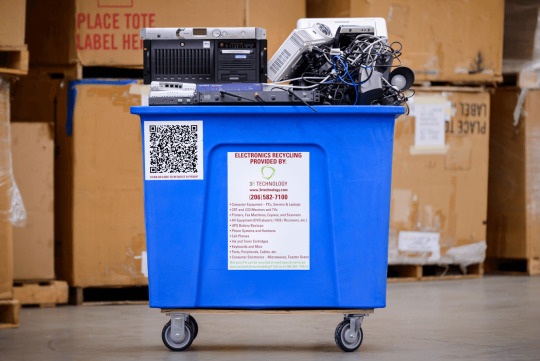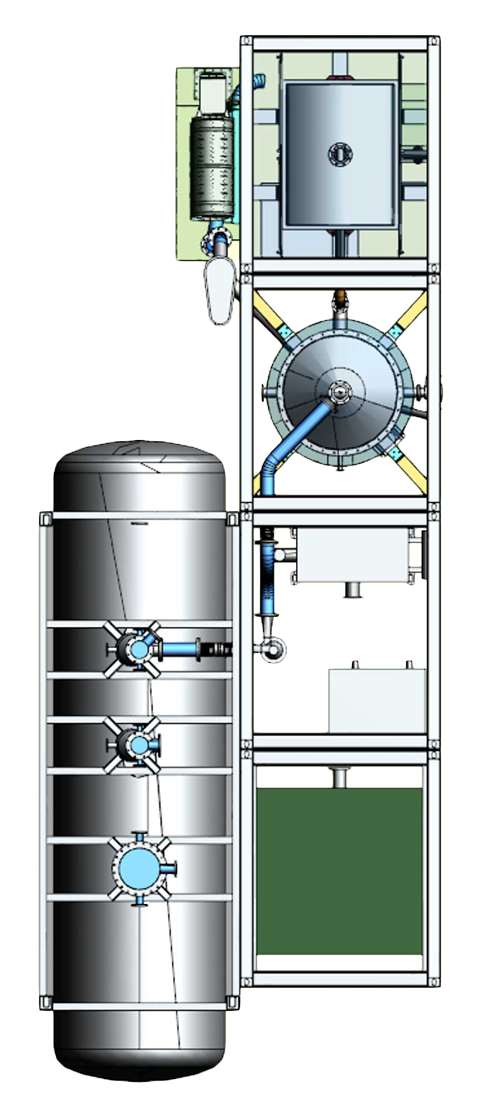#RecyclingTechnology
Text
EV Battery Recycling Market Growth, Trends, Top Key Players, and Forecasts by 2030

The qualitative report published by Exactitude Consultancy research on the “EV Battery Recycling Market offers an in-depth examination of the current trends, latest expansions, conditions, market size, various drivers, limitations, and key players along with their profile details. The EV Battery Recycling market report offers the historical data for 2018 to 2023 and also makes available the forecast data from the year 2024 to 2030 which is based on revenue. With the help of all this information research report helps the Market contributors to expand their market positions. With the benefit of all these explanations, this market research report recommends a business strategy for present market participants to strengthen their role in the market. This report analyzes the impact of the Covid 19 pandemic on the EV Battery Recycling Market from a Global and Regional perspective.
The EV Battery Recycling Market is expected to grow at 37.40% CAGR from 2022 to 2029. It is expected to reach above USD 31.42 Billion by 2029 from USD 1.8 Billion in 2023.
For The Full Report Click here: https://exactitudeconsultancy.com/reports/14792/ev-battery-recycling-market/
#BatteryRecycling#ElectricVehicleRecycling#BatteryReuse#BatteryCircularEconomy#RecycleEVbatteries#SustainableMobility#GreenTechnology#RenewableEnergy#CircularEconomy#RecyclingInnovation#CleanEnergy#EVIndustry#RecyclingTechnology#EnvironmentalSustainability#WasteManagement#ResourceRecovery#ZeroWaste#RecycleAndReuse#FutureOfMobility
0 notes
Text

A Pyrolysis Plant converts waste materials into useful products through a process of thermal decomposition. It's used for recycling plastic waste, tires and biomass into fuel oil, carbon black, and steel wire.
#AdvancedBiofuel#PyrolysisPlant#WasteConversion#RecyclingTechnology#EnvironmentalSustainability#GreenEnergy#CircularEconomy#WasteToEnergy#BiofuelProduction#PyrolysisTechnology#IndustrialSustainability#GreenInnovation
0 notes
Text
How technology has changed life
By Gabrielle Ahern
Technology has made a positive impact to human society for many years, possibly thousands. If you think about what you do every day and how that activity is linked to using technology, the list is quite exhausting. When I wake up in the morning, I check my mobile for messages or emails, before preparing for the day, which is dominated by more apps, devices, equipment,…

View On WordPress
#ancientinvention#archaeology#bluetooth#discovery#recyclingtechnology#renewableenergy#saltywave#Science#sciencestory#shoppingtechnology#Technology#visualstoryteller#wifi
0 notes
Text
Trends in Advanced Plastic Recycling
The Manufacturing Outlook: In light of the growing interest in circular economies, emerging recycling technologies are gaining traction complementary to mechanical recycling.

0 notes
Text
Understanding E-Waste Recycling And The Process E-Waste Recycling

Introduction: E-Waste Recycling
Electronic waste, commonly known as e-waste, refers to discarded electronic devices such as smartphones, laptops, televisions, and household appliances. With the rapid advancement of technology, the production and disposal of electronic devices have increased substantially, leading to a significant environmental concern.
E-waste recycling is the process of recovering and reusing the valuable resources present in electronic devices. It aims to minimize the negative impact of e-waste on the environment by diverting it from landfills and extracting valuable components for recycling. This process plays a crucial role in conserving natural resources, reducing energy consumption, and mitigating the environmental hazards associated with e-waste disposal.
The Growing Issue of E-Waste
As technology continues to evolve, the production of electronic devices increases exponentially, leading to a significant rise in e-waste generation. Improper disposal of e-waste can have severe consequences for the environment and human health. E-waste often contains hazardous substances like lead, mercury, cadmium, and brominated flame retardants. When these substances leach into the soil and water, they can contaminate ecosystems and pose health risks to both humans and wildlife.
The Process of E-waste Recycling
E-waste recycling involves a series of carefully orchestrated steps to ensure the efficient and environmentally friendly recovery of valuable resources. Let's explore each step in detail.
1: Collection and Sorting
The first step in e-waste recycling is the collection and sorting of discarded electronic devices. Collection centers, recycling companies, and designated drop-off points play a crucial role in gathering e-waste. Once collected, the e-waste is sorted based on its type and potential for recycling.
2: Dismantling and Component Recovery
After sorting, the e-waste undergoes dismantling, where skilled technicians disassemble the devices into various components. Components like circuit boards, batteries, cables, and displays are carefully separated for further processing. This step ensures that valuable materials can be recovered efficiently.
3: Safe Handling of Hazardous Materials
During the dismantling process, it is essential to handle hazardous materials with utmost care. Substances like lead, mercury, and cadmium are carefully extracted and treated separately to prevent their release into the environment. Proper safety measures and protocols are followed to ensure the well-being of the workers and minimize the environmental impact.
4: Recycling and Recovery of Materials
Once the hazardous materials have been safely removed, the remaining components and materials are processed for recycling. Precious metals like gold, silver, and copper are extracted from circuit boards through specialized techniques. Plastics and glass are also recycled to create new products or used as raw materials in other industries.
5: Proper Disposal of Residual Waste
After the recycling process, there may be some residual waste left, which is disposed of in an environmentally responsible manner. This waste is carefully treated to minimize any potential harm to the environment. By ensuring proper disposal, e-waste recycling aims to minimize the overall impact on landfills and promote a circular economy.
The Role of Technology in E-waste Recycling
Technology plays a crucial role in streamlining and optimizing the e-waste recycling process. Advanced sorting systems, robotic automation, and innovative techniques enable efficient separation of different materials. Furthermore, data management systems help track and trace the flow of e-waste, ensuring transparency and accountability throughout the recycling chain.
E-waste Recycling: A Global Perspective
E-waste is a global issue that requires collective action and collaboration. Many countries and organizations have recognized the importance of e-waste recycling and have implemented regulations and initiatives to address the problem. International cooperation and knowledge sharing are vital for developing sustainable e-waste management practices worldwide.
Government Regulations and Policies
Governments worldwide are enacting regulations and policies to promote responsible e-waste management. These policies often include guidelines for collection, recycling targets, and the establishment of recycling infrastructure. By enforcing such regulations, governments aim to create a framework that encourages manufacturers, consumers, and recycling companies to actively participate in e-waste recycling.
Promoting Awareness and Responsible Consumption
Raising awareness among the general public about the importance of e-waste recycling is crucial. Education campaigns, community programs, and public-private partnerships can play a significant role in promoting responsible consumption and disposal of electronic devices. Encouraging consumers to make informed choices, such as opting for repair and recycling options, can help reduce e-waste generation.
The Future of E-waste Recycling
As technology continues to advance, the volume of e-waste will likely increase. However, innovative solutions are emerging to tackle this growing challenge. Researchers are exploring new methods for recycling complex electronic devices, such as smartphones, which often contain a wide range of materials.
3R Technology
8002 S 208th St E105, Kent, WA 98032, United States
(206) 582-7100
https://goo.gl/maps/KWx9j27uyeBH2uxt9
0 notes
Link
According to a recent study, the world generates around 2 billion tons of waste annually. Out of these 2 billion tons, 33% is not managed in an environmentally safe manner. Experts say recycling is the best way to reduce the impact of waste on the environment.
1 note
·
View note
Text
Turning plastic waste into fuel
The plastic waste of the local Swindon, UK, population is being put to good use: Close to the town’s recycling facility works a company, aptly named Recycling Technologies, on turning plastic debris into a low sulphur hydrocarbon product with a high caloric value.
This product is called Plaxx, and it comes in different variations - as feedstock for plastic manufacturers to use for new plastic production, as heavy fuel oil for both the shipping industry and large scale heat and energy sectors as well as a paraffin wax, which can be used as a coating, feedstock for moulding, but also for candles.

Recycling Technologies has developed a thermal cracking process, which, after cleaning and sorting the raw plastic from metals, stones and glas and all non-recyclable plastic like packaging, pots, and films, cracks long carbon chains into shorter chains and gasifies the remaining material. This refined gas is then condensed into Plaxx.

Annually, the RT7000 (the thermal cracking machine) can produce around 5000 tonnes of Plaxx from 7000 tonnes/year of material, with a throughout capacity of 1 tonnes/hour.
vimeo
124 notes
·
View notes